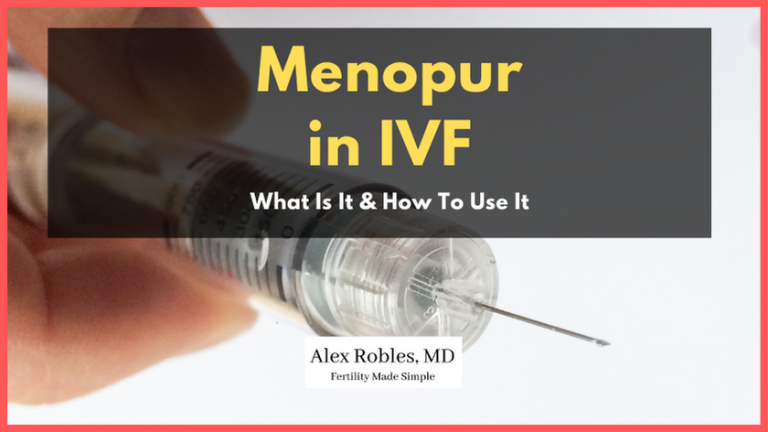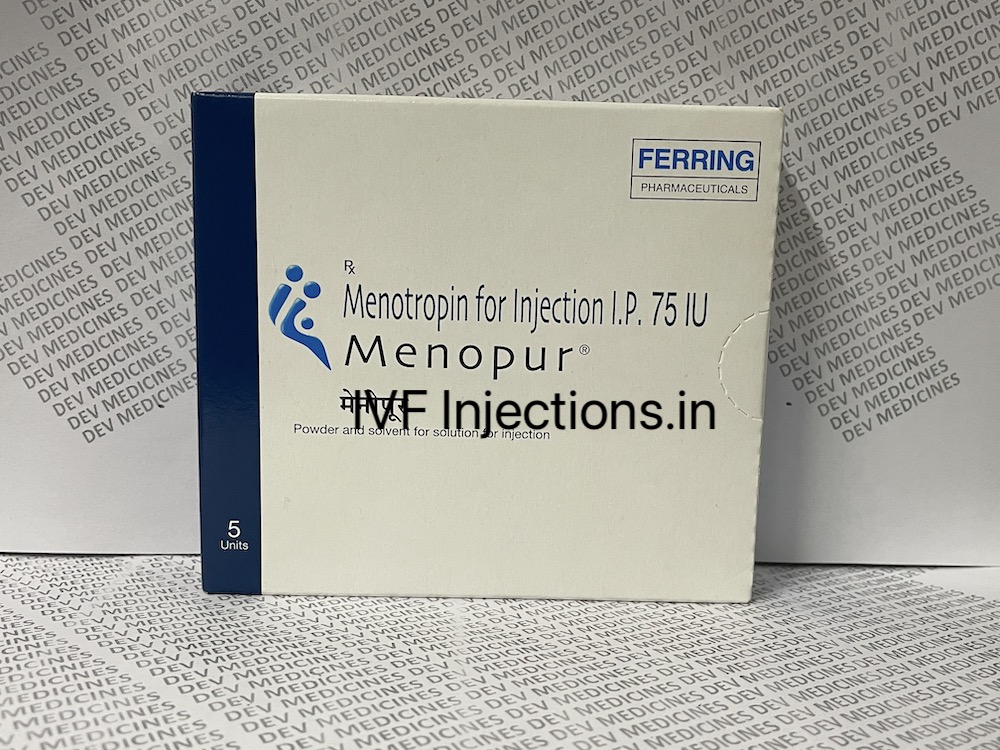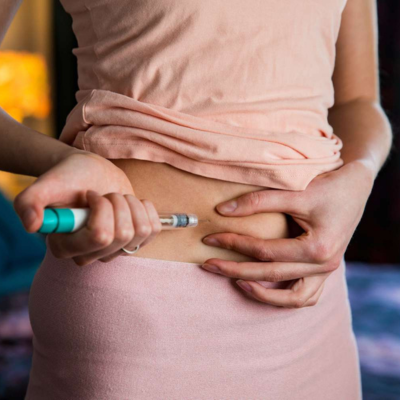What Does Menopur Do in IVF?
If you’re diving into the world of in vitro fertilization (IVF), you’ve probably heard the name “Menopur” tossed around by doctors, nurses, or even friends who’ve been through the process. It’s one of those medications that sounds mysterious at first—like something out of a sci-fi movie—but once you get the scoop, it’s a key player in helping dreams of parenthood come true. So, what exactly does Menopur do in IVF? Buckle up, because we’re about to break it down in a way that’s easy to follow, packed with the latest insights, and loaded with practical tips to help you feel confident on this journey.
IVF can feel like a rollercoaster, with its ups, downs, and unexpected turns. Menopur is like the engine that keeps things moving, working behind the scenes to boost your chances of success. Whether you’re just starting to research fertility treatments or you’re already prepping for your first cycle, this article will give you a clear picture of how Menopur fits into the puzzle—plus some fresh perspectives you won’t find everywhere else.
Why Menopur Matters in IVF
IVF is all about creating the perfect conditions for a baby to start growing, and that begins with your ovaries. In a natural cycle, your body usually produces one egg each month. But in IVF, doctors aim for more—think 10 to 20 eggs if possible—because the more eggs you have, the better your odds of getting a healthy embryo. That’s where Menopur steps in.
Menopur is a fertility drug made from two hormones: follicle-stimulating hormone (FSH) and luteinizing hormone (LH). These are the same hormones your brain’s pituitary gland naturally sends out to nudge your ovaries into action. FSH tells your ovaries to grow follicles (tiny sacs that hold eggs), while LH helps those eggs mature and get ready to be released. In IVF, Menopur delivers a big dose of both hormones to kick things into high gear, encouraging your ovaries to produce multiple follicles at once.
Picture it like this: if your ovaries are a garden, Menopur is the super-charged fertilizer that helps grow a whole bunch of flowers instead of just one. It’s a critical part of the “controlled ovarian stimulation” phase, which is the first big step in IVF. Without it, your doctor wouldn’t have enough eggs to work with, and the whole process could stall before it even gets going.
How Menopur Works: A Step-by-Step Look
So, how does Menopur actually do its job? Let’s walk through it like you’re prepping for your own IVF cycle. It’s not as complicated as it might seem, and knowing the details can make those daily injections feel a little less daunting.
Step 1: Boosting Follicle Growth
When you start your IVF cycle—usually on day 2 or 3 of your period—Menopur goes to work. You’ll inject it under your skin (typically in your belly), and it sends a signal to your ovaries: “Hey, let’s grow some follicles!” Unlike a natural cycle where only one follicle usually takes the lead, Menopur pushes several to develop at the same time. This is called multi-follicular development, and it’s the foundation of a successful egg retrieval.
Step 2: Maturing the Eggs
As the follicles grow, the eggs inside them need to ripen. That’s where the LH in Menopur comes in. It’s like the final push that gets those eggs ready for prime time. Your doctor will monitor this process with ultrasounds and blood tests, checking hormone levels like estrogen to see how things are progressing. Typically, you’ll take Menopur for 8 to 12 days, depending on how your body responds.
Step 3: Setting the Stage for Retrieval
Once your follicles are big enough (usually around 18-20 millimeters), Menopur’s job is mostly done. Your doctor will give you a “trigger shot” (often hCG or a GnRH agonist) to finish maturing the eggs and prep them for retrieval. About 36 hours later, you’ll head in for the egg retrieval procedure, where those Menopur-grown eggs get collected and sent to the lab for fertilization.
It’s a team effort, really. Menopur doesn’t work alone—it’s often paired with other meds like Gonal-F or Follistim (which are pure FSH) to fine-tune the process. But its combo of FSH and LH gives it a special edge, mimicking your body’s natural rhythm more closely than FSH-only drugs.
What Makes Menopur Different?
You might be wondering: with so many fertility drugs out there, why Menopur? It’s a fair question, and the answer lies in its unique makeup and how it’s been used for decades.
The FSH + LH Combo
Unlike some medications that only deliver FSH, Menopur brings both FSH and LH to the table. Why does that matter? Research shows that LH plays a big role in egg quality and ovarian response, especially for certain women. A 2020 study in Fertility and Sterility found that women using Menopur had similar pregnancy rates to those using recombinant FSH (rFSH) alone, but with a slight edge in embryo quality for some IVF cases. The LH boost might help your eggs develop more evenly, which could mean better embryos down the line.
Where It Comes From
Menopur isn’t cooked up in a lab from scratch—it’s derived from the urine of postmenopausal women, then highly purified. (Don’t worry, it’s totally safe and sterile!) This human-derived source gives it a natural vibe that some doctors and patients prefer over fully synthetic options. It’s been around since the 1960s, so it’s got a long track record of success.
Who It’s Best For
Not everyone needs Menopur. If your body already makes enough LH, your doctor might stick with an FSH-only drug. But if you’re over 35, have polycystic ovary syndrome (PCOS), or didn’t respond well to other meds in the past, Menopur might be your MVP. A 2023 study from the American Society for Reproductive Medicine suggested that women over 35 using Menopur had a slightly lower risk of ovarian overstimulation compared to rFSH alone—something worth chatting about with your doctor.
The Real Deal: What to Expect When Taking Menopur
Okay, let’s get practical. If you’re about to start Menopur, what’s it really like? Here’s the scoop, straight from the trenches.
How You Take It
Menopur comes as a powder you mix with saline, then inject with a tiny needle. Most people do it at night, around the same time each day, for consistency. Your nurse will show you how to mix and inject it—think of it like a mini science experiment. Pro tip: keep your supplies organized in a little kit so you’re not scrambling at 9 p.m.
- ✔️ Do: Inject it in your lower belly, about two inches below your navel. Pinch the skin lightly to make it easier.
- ❌ Don’t: Stress if you’re a few minutes late. Just stick to your routine as best you can.
Side Effects to Watch For
Most people handle Menopur pretty well, but it can come with some baggage. Common side effects include:
- Bloating or mild stomach pain
- Headaches
- Redness or soreness at the injection site
In rare cases, it can lead to ovarian hyperstimulation syndrome (OHSS), where your ovaries overreact and swell up. Symptoms like severe pain, nausea, or rapid weight gain mean you should call your doctor ASAP. A 2022 report from the CDC noted that OHSS happens in about 1-5% of IVF cycles, and Menopur’s LH component might lower that risk compared to some alternatives.
A Day in the Life
Here’s a quick peek at what a Menopur day might look like:
- Morning: Head to the clinic for an ultrasound and bloodwork (every few days).
- Evening: Mix your dose (say, 150 IU), inject it at 8 p.m., and relax.
- Night: Sip some water and rest—your ovaries are busy!
It’s a routine you’ll get the hang of fast. And trust me, seeing those follicles grow on the ultrasound screen makes it all feel worth it.
Menopur Myths vs. Facts
There’s a lot of chatter online about Menopur, and not all of it’s true. Let’s clear up some confusion with a quick myth-busting session.
Myth #1: Menopur Guarantees More Eggs
Fact: It boosts follicle growth, but how many eggs you get depends on your body. Some people grow 20 follicles; others might get 5. Age, ovarian reserve, and even stress can play a role. A 2021 study in Reproductive BioMedicine Online found that women under 30 averaged 15 eggs per cycle with Menopur, while those over 38 averaged 8.
Myth #2: It’s Only for Older Women
Fact: Nope! While it’s great for women over 35, it’s used across all ages. Younger women with PCOS or low responders might benefit too. It’s all about tailoring the med to your needs.
Myth #3: Menopur Hurts Egg Quality
Fact: There’s no solid evidence it harms egg quality. Egg quality is mostly tied to your age and genetics, not the meds. In fact, some research hints that Menopur’s LH might improve quality in certain cases—more on that later.
Interactive Quiz: Is Menopur Right for You?
Curious if Menopur might be in your IVF plan? Take this quick quiz! Jot down your answers and chat with your doctor to see if it fits.
- How old are you?
- A) Under 30
- B) 30-35
- C) Over 35
- Have you done IVF before?
- A) Nope, first time!
- B) Yes, and it worked.
- C) Yes, but no luck yet.
- Any fertility conditions?
- A) None I know of
- B) PCOS
- C) Low ovarian reserve
Results: If you picked mostly C’s, Menopur might be a top contender—its LH boost could help. Mostly A’s or B’s? Your doc might lean toward FSH-only meds, but Menopur’s still an option. Mix of answers? It’s all about your unique profile!

Fresh Insights: 3 Things You Haven’t Heard About Menopur
Most articles cover the basics, but let’s dig into some under-the-radar details that could change how you see Menopur.
1. It Might Reduce Early Pregnancy Loss
A 2020 clinical trial (the MEGASET-HR study) compared Menopur to rFSH in high responders—women who grow lots of follicles. While pregnancy rates were similar (35.5% for Menopur vs. 30.7% for rFSH), Menopur showed a trend toward lower early pregnancy loss after fresh embryo transfers. Researchers think the LH might stabilize the uterine lining, but more studies are needed. If you’ve had miscarriages before, this could be a game-changer to discuss with your team.
2. Your Diet Could Affect How It Works
Here’s something new: what you eat might tweak Menopur’s performance. A small 2023 study from Sidra Medicine found that women on a Mediterranean diet (think fish, veggies, and olive oil) had a slightly better ovarian response to Menopur than those on a high-sugar Western diet. The theory? Nutrients like omega-3s might enhance hormone signaling. Try adding salmon or walnuts to your plate during your cycle—it’s a low-risk move with potential perks.
3. It’s Being Tested in New Ways
Menopur isn’t standing still. Recent research is exploring “mixed protocols,” combining it with newer drugs like follitropin delta (Rekovelle). A 2021 study in ScienceDirect found that this combo led to more usable blastocysts (day 5/6 embryos) without severe OHSS. It’s still experimental, but it hints at a future where Menopur gets even more personalized. Keep an eye out—your clinic might offer this down the road.
Menopur in Action: A Real-Life Story
Meet Sarah, a 34-year-old teacher from Ohio who went through IVF last year. She’d been trying to conceive for three years, and after a failed cycle with Gonal-F, her doctor switched her to Menopur. “I was nervous about the injections,” she says, “but my nurse showed me a trick—ice the spot first, and it barely stings.”
Sarah took 225 IU of Menopur daily for 10 days. Her ultrasounds showed 12 follicles, and retrieval gave her 9 eggs—7 fertilized. “Seeing those embryos on the screen was unreal,” she recalls. She transferred one, froze the rest, and now she’s 20 weeks pregnant. “Menopur felt like my secret weapon,” she says. “It gave me options I didn’t have before.”
Sarah’s story isn’t everyone’s, but it shows how Menopur can turn things around when the first try doesn’t pan out.
Practical Tips for Your Menopur Journey
Ready to roll with Menopur? Here are some hands-on tips to make it smoother, based on real experiences and the latest advice.
Before You Start
- Ask Questions: How much will you take? Will it pair with other meds? Your dose (75-450 IU) depends on your age, weight, and ovarian reserve.
- Stock Up: Get extra needles and saline—running out mid-cycle is a hassle.
- Chill Out: Store it in the fridge, but let it warm up for 10 minutes before mixing. Cold shots sting more.
During Your Cycle
- Track It: Use a calendar or app to log your doses and appointments. Missing a shot can throw things off.
- Hydrate: Drink plenty of water to help your ovaries and ease bloating.
- Rest Up: Skip the gym on injection days if you feel crummy—your body’s working hard.
After Retrieval
- Watch Your Body: Mild cramps are normal, but sharp pain or swelling? Call your clinic.
- Celebrate Small Wins: Even 5 eggs is a victory—quality beats quantity.
Poll: How Do You Feel About Menopur?
Let’s get interactive! Pick your vibe and share in your head (or with a friend if you’re chatting IRL):
- A) Excited—it’s my ticket to more eggs!
- B) Nervous—needles aren’t my thing.
- C) Confused—still figuring out what it does.
- D) Hopeful—hoping it’s the key for me.
What’s your pick? It’s normal to feel a mix of all these—IVF’s an emotional ride.
The Science Behind Menopur: What’s New in 2025?
Science doesn’t sleep, and neither does the research on Menopur. Here’s what’s bubbling up as of April 2025, based on the latest trends and studies.
Egg Quality Debate
Egg quality’s a hot topic, and Menopur’s role is under the microscope. A 2024 meta-analysis in Gynecologic and Obstetric Investigation revisited older data and found that Menopur might edge out rFSH in embryo development for women over 35. The LH could help eggs mature more naturally, but experts say we need bigger trials to nail it down. For now, it’s a promising hint.
High Responders Love It
If you’re a “high responder” (think 15+ follicles), Menopur might be your match. The MEGASET-HR study’s follow-up data from 2023 showed it keeps pregnancy rates steady without tipping into severe OHSS territory. Clinics are buzzing about this on X, with docs noting it’s a go-to for women with robust ovaries.
Cost vs. Outcome
Menopur’s not cheap—about $50-$100 per vial, and you might need 10+ per cycle. But a 2024 cost-effectiveness analysis from Ferring Pharmaceuticals suggested it could save money long-term by reducing failed cycles in certain patients. If insurance is tight, ask your clinic about discounts or samples.

Menopur vs. Other Meds: A Quick Comparison
Wondering how Menopur stacks up? Here’s a handy table to break it down:
| Drug | What’s in It? | Best For | Pros | Cons |
|---|---|---|---|---|
| Menopur | FSH + LH | Older women, PCOS, low responders | May boost egg quality, mimics nature | More mixing, pricier |
| Gonal-F | FSH only | Younger women, high responders | Easy to use, precise dosing | No LH support |
| Follistim | FSH only | Similar to Gonal-F | Pen option, convenient | No LH, similar cost |
| Clomid (pills) | Indirect stimulator | Mild cases, not IVF | Cheap, oral | Less control, fewer eggs |
Your doctor picks based on your body’s quirks—there’s no one-size-fits-all!
Troubleshooting Menopur: What If It’s Not Working?
Sometimes, Menopur doesn’t click right away. If your follicles aren’t growing or you’re feeling off, don’t panic—here’s what might be up.
Poor Response
If you’re over 38 or have low ovarian reserve, you might only get a few follicles. A 2022 study in Human Reproduction found that upping the dose to 300 IU helped some women, but others needed a protocol switch. Talk to your doc about tweaking things.
Too Much Response
Growing 20+ follicles? You might be at risk for OHSS. Your clinic might lower your dose or add a GnRH antagonist to chill things out. Sarah (from earlier) had this—her doc cut her dose from 225 to 150 IU, and it worked like a charm.
Feeling Lousy
Bloating or headaches dragging you down? Try a heating pad for your belly and acetaminophen for pain. If it’s unbearable, your dose might need adjusting.
Your Menopur Cheat Sheet
Here’s a quick rundown to keep handy:
- What it does: Grows multiple follicles for egg retrieval.
- How long: 8-12 days, nightly shots.
- Dose: 75-450 IU, tailored to you.
- Side effects: Bloating, soreness—usually mild.
- Goal: More eggs, better chances.
Tape this to your fridge or snap a pic—it’s your IVF lifeline!
Final Thoughts: Menopur’s Role in Your Story
Menopur isn’t just a drug—it’s a partner in your IVF adventure. It’s there to nudge your ovaries, grow those precious eggs, and set the stage for that moment when you see two lines on a test or hear a heartbeat. It’s not magic, but it’s pretty close, blending science and hope in a way that’s helped millions.
As you navigate this path, remember you’re not alone. Whether it’s your first cycle or your fifth, Menopur’s got a track record of turning possibilities into realities. Pair it with a good support system, a dash of patience, and maybe a salmon dinner or two, and you’re giving yourself a solid shot at success.
So, what’s next? Chat with your doctor, prep your injection spot, and take it one day at a time. You’ve got this—and Menopur’s got your back.




